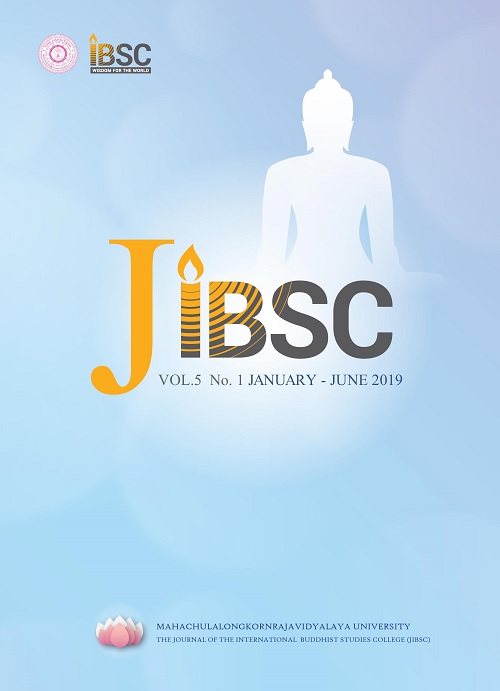The Concept and Role of Anusaya from Early Buddhism to Mahāyanā
Main Article Content
Abstract
This article would like to convey the reality of nature on Buddhist teaching concerning with how to develop and practice the latent dispositions. The writing of this Article needs to understand how Early Buddhism and Mahāyanā is practicing by comparison The focus of the philosophical and psychological investigation of the Buddha is the predicament of human suffering Dukkha 1 P. More precisely the Buddhist doctrine is concerned with the reasons and factors that create human dissatisfaction, tension,misery, anxiety and all types of affl ictions in general. In the
second Noble Thruth 2, the Buddha describes the cause of Dukkha withthe Pali word “Taṇhā”, which means craving, or a constant “thirst” which lays at the bottom of all human motivations and desires either conscious or unconscious. And what is the origin of suffering? It is craving, which brings renewal of being, is accompanied by delight and lust, and delights in this and that; that is, craving for sensual pleasures, craving for being, and craving for non-being. This is called the origin of suffering. (Sammāditthi Sutta M I 46) Taṇhā, is depicted as conscious motives into further three unwholesome roots, also called Noxious-trio (akusala mūla): “lobha” greed, lust which generates all kind of desires, “dosa” aversion, hatred, resentment, rejecting what we do not like or want, “moha” is creating confusion and delusion in the mind, also named ignorance or not understanding the reality as it is.
Article Details
The Journal of TCI is licensed under a Creative Commons Attribution-NonCommercial-NoDerivatives 4.0 International (CC BY-NC-ND 4.0) licence unless otherwise stated. Please read our Policies page for more information on Open Access, copyright and permissions.


